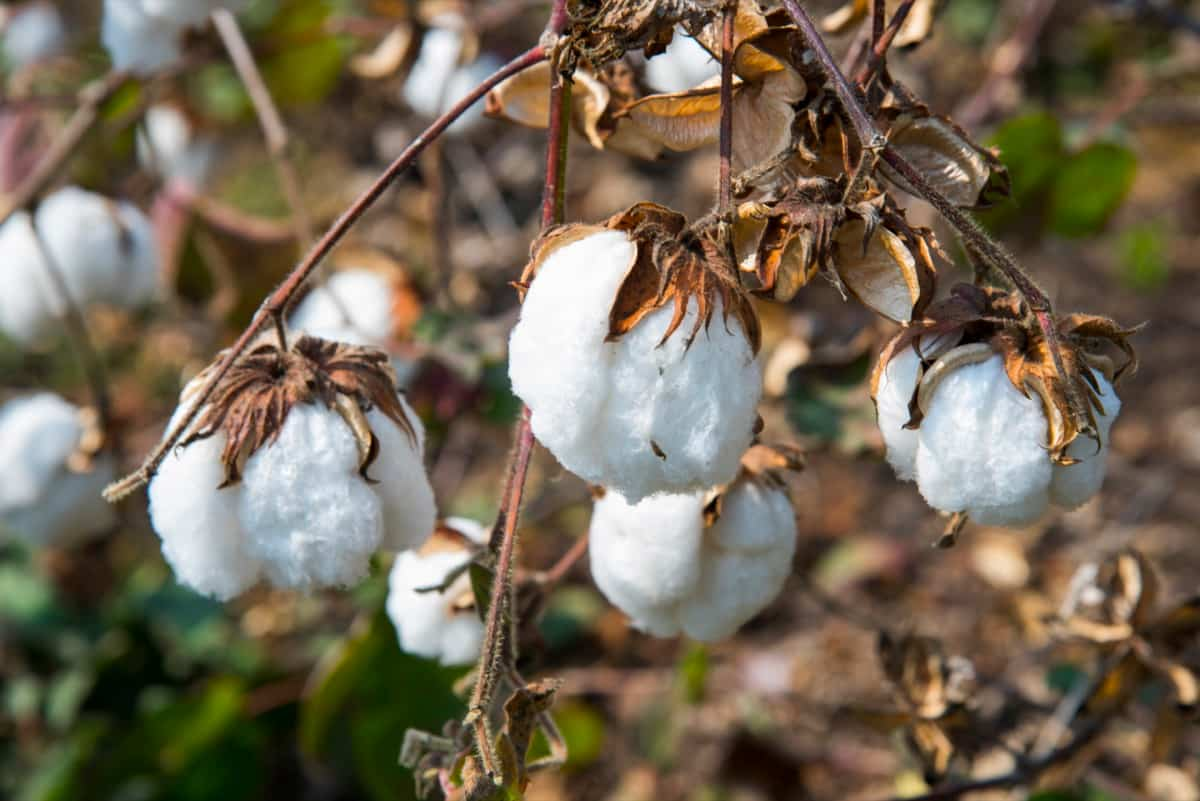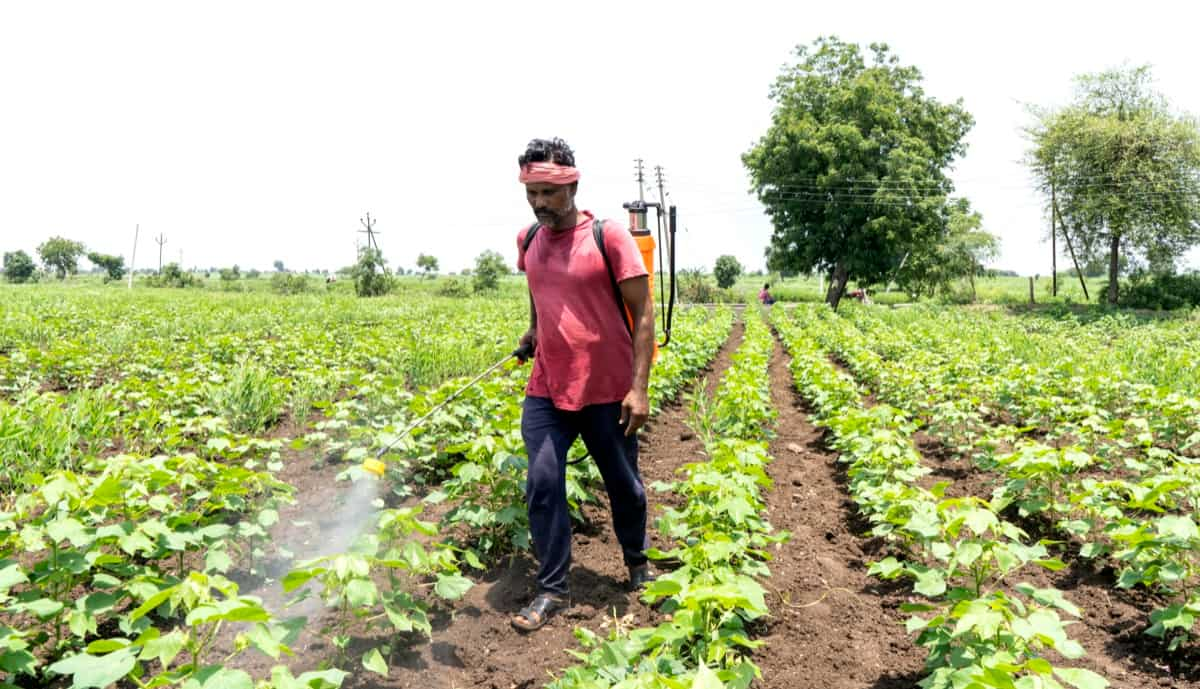Since cotton is a woody perennial shrub with a wide range of environmental requirements, it is grown as an annual field crop in warm weather. The varieties are bred for productivity in various environments and cultures. India is no doubt one of the world’s most important commercial crops. According to estimates, India grows cotton on 9.0 million hectares under diverse agroecological conditions, the largest area among cotton-growing countries. Pesticides are used in cotton cultivation to a greater extent than any other crop.

Sucking Pest Control in Cotton Crop
Cotton Jassid
The cotton jassid is a cotton-sucking pest that causes serious damage to cotton plants. Their adult form is flat and small, like the end of a lentil. There are usually black spots and a yellowish-green color on the front wings of adults. Whenever anything disturbs them, they jump and fly away. Cotton jassids feed on leaf sap by sucking sap from the underside of leaves. They absorb sap from plants and introduce salivary toxins that damage tissues and impair photosynthesis.
Symptoms
- Infected leaves turn yellow and brown, starting at the margins and moving toward the midrib.
- Gradually, the leaves curl before drying completely and falling off.
- In severe cases of hopper burn, leaves die, and young plants are stunted.
Biological Control
- Spiders and ladybird beetles attack jassids. When you see these natural enemies, do not kill them.
- A tiny wasp has also been reported to lay eggs in Jasssid nests. Bacillus thuringiensis can infect both nymphs and adults.
Cultural Control
- Monitor: Removing cotton jassids at the beginning of an infestation is easier and more cost-effective. For cotton jassids, the nymphal stage is most susceptible to insecticides.
- Plant-resistant varieties: Cotton jassids are rarely attacked by some cotton varieties and are less susceptible to them than others. It is not necessary to spray cotton crops that are resistant to jassids, even if there is a high level of infestation.
- Clean cultivation: The use of fertilizers should not be excessive. Urea should not exceed three to four bags, as jassids prefer crops high in nitrogen.
Chemical Control
- Imidacloprid 70ws is applied at 10 grams per kilogram of seed at planting
- Dimethoate 40 EC should not be applied more than 400ml per acre during high infestation periods
- During peak pest pressure, Acephate75 SP is applied at 250-375gm per acre.
- You should use Imidacloprid 200 SL at a rate of 40 ml/acre, Methyl Demeton 25 EC at a rate of 200 ml/acre, or Phosphamidon 40 SL at a rate of 250 ml/acre. Approximately 200 liters of insecticide should be sprayed per acre for each insecticide.
Aphids
Cotton aphids range in size and color from light yellow to dark green and almost black. Cotton aphids feed on the underside of new leaves, plant terminals, and flower buds initially, but they will infest older leaves as their population grows. Cotton aphids ingest copious amounts of plant sap from the phloem through sucking-piercing mouthparts. Plants lose energy when fed, which they could otherwise use to grow or produce fruit.
Symptoms
- The leaves may curl downward, older leaves may turn yellow and shed, and plant fruit may also shed or shrink if there is a heavy infestation.
- Honeydew, a substance similar to syrup, is excreted by aphids. The sticky, shiny appearance of leaves and other plant structures is caused by accumulating honeydew.
- It is possible for honeydew covering a leaf to grow a black sooty mold, which partially inhibits photosynthesis. Furthermore, honeydew may accumulate on the lint of open cotton bolls, making it unusable for milling.
In case you missed it: How to Start Cotton Farming in the USA: A Step-By-Step Production Guide

Biological Control
The most common natural enemies of aphids are minute pirate bugs, big-eyed bugs, damsel bugs, green lacewings, and fungi. Despite their ability to suppress aphid populations in some cases, these natural enemies can only exert their impact after a plant has been severely damaged.
Cultural Control
- When cotton is planted late (late April to early May), then when it is planted early (early April), cotton aphid populations consistently increase. Aphids are also discouraged by well-watered and fertilized cotton plants.
- Cultivar selection also appears to influence the growth of aphid populations. There are more instances of aphid infestations and associated damage among Pima cultivars. Acala cotton with hairy leaves is more likely to have aphid infestation than cotton with smooth leaves.
Chemical Control
Spray any one of the below insecticides (200-liter spray fluid/acre)
| Chemical compound | Dosage |
| Methyl demeton 25 EC | 200 ml/acre |
| Dimethoate 30 EC | 200 ml/acre |
| Acetamiprid 20% SP | 50 grams/acre |
| Azadirachtin 0.03% EC | 200 ml/acre |
| Carbosulfan 25%DS | 60 grams/kg of seed |
| Imidacloprid 17.8% SL | 40 -50 ml/acre |
| Methyl demeton 25% EC | 500 ml/acre |
Thrips
Thrips are tiny, slender insects that measure less than 0.06 inches in length. Cotton will most likely be infested with Western flower thrips throughout the growing season. The wings of adults are slender and transparent as well as light-colored. It is common for cotton to be affected by bean thrips in summer, usually near the edge of a field. Immature bean thrips have orange or red spots on their abdomens; adults have white bands around their wings.
Symptoms
- Despite their tendency to damage seedling leaves, Western flower thrips are beneficial mite predators, feeding on leaves, buds, and buds.
- Once the weather warms up, infested seedlings may appear severely deformed, but they will recover quickly.
- If the infestation is severe, the plant’s terminal buds may be destroyed or even the entire plant.
- Mature leaves of cotton plants can turn coppery brown or red when bean thrips feed on them, and lower leaves may drop off.
Cultural Control
- Insecticide resistance may be slowed by changing planting dates as a cultural control tactic.
- In addition to cultural control, cotton varieties with inherent properties that resist thrip damage can also be used.
- When cotton is planted, heavy plant residue can also reduce thrips populations and damage. A heavy residue can result from the incorporation of winter cover crops and the reduction of tillage.
Chemical Control
- Seeds were treated with imidacloprid 60FS at 10 grams/kg or thiamethoxam 70 WS at 5 grams/kg.
- The NSKE should be applied at a rate of 5%, or the acetamiprid 20 SP should be applied at a rate of 0.2 grams per liter.
- Alternatively, spray 1 ml/liter of fipronil 5 SC.
- Apply the liquid after smearing the stems with imidacloprid 17.8 SL at 1ml:20ml water on the growing tip of the plant.
In case you missed it: 1 Acre Cotton Project Cultivation Report in India: Production Cost and Profit

Conclusion
Using agrochemicals for pest control has become a pragmatic approach to pest management. A majority of cotton insecticides are overused and indiscriminately applied, causing insecticide resistance, pest resurgence, accumulation of harmful residues, and toxicity to non-target organisms.
- Feed Your Flock for Less: Top 10 Tips to Save on Chicken Feed
- Ultimate Guide to Ossabaw Island Hog: Breeding, Raising, Diet, and Care
- Hatching Answers: The Top 10 Reasons Your Chickens Aren’t Laying Eggs
- Eggs and Economics: Breaking Down the Cost of Raising Backyard Chickens
- Defend Your Greens: Proven Methods to Keep Iguanas Out of Your Garden
- Ultimate Guide to Cinnamon Queen Chicken: A Comprehensive Guide for Beginners
- Ultimate Guide to California Tan Chicken: Breeding, Raising, Diet, Egg-Production and Care
- Ultimate Guide to Marsh Daisy Chicken: Breeding, Raising, Diet, and Care
- 10 Types of Chicken Farming Businesses You Can Start for Profits